Snakes have been an integral part of different cultures across the globe. Be it Eve’s transgression in Garden of Eden as per Christian mythology or Aztec the God of civilisation. Venerated as symbol of fertility, rebirth, renewal and even immortality in many civilisations. Worshiping snake god is a common practice in many mythologies.
The symbol of the most Noble profession of medicine – The Rod of Asclepius or the Caduceus are revolving around snakes. The Bowl of Hygeia (symbol of Pharmacy) is also depicting snake as a symbol of healing. The ability of snake to shed skin and change from a lethargic stage to one of rapid activity symbolizes the power to convalesce from illness
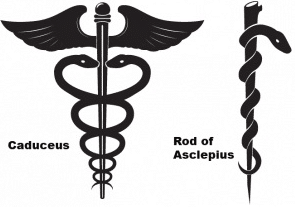

Snakes and Hinduism
Hindus worship nature as God. Worshipping of animals as God is also common in India. This we can see in celebrations of Naga Panchami, for instance, where people worship snakes.
India celebrates Naga Panchami on the fifth day of the pious month of shravana. On this day different regions of India worship snake particularly the Indian Cobra (aka King Cobra) as snake god and offer milk and sweets to snakes and idols of snakes as a part of celebrations.
There is well documented evidence of Serpents and their worship in many civilisations. However, the Hindus are the only race in the world who continue to practice this tradition of worshipping snake as deity.
Legends
Indian literature has mentions of serpents as Gods and Rulers. In Hindu Mythology we consider, the Shesha Naga or the Adishesha (the first) or Ananta Shesha (the endless), as the King of Nagas. Shesha Naga is depicted as a nine hooded snake associated with Lord Vishnu
The tale of King Vasuki- the serpent king is also popular in Hinduism. Vasuki is the legendary snake whose contributions during the churning of the sea (Sagar Manthana) is very popular. Lord Shiva adorns Vasuki as a part of his attire. The mention of Vasuki is also present in Chinese and Japanese mythology as being one of the “Eight Great Dragon Kings”.
Manasa is the snake goddess. Mythology says she is the sister of Vasuki and mother of Sage Astika (who started the celebrations of Naga Panchami).
Takshaka (Also known as Nagraja) is a very powerful snake king in Hinduism and Buddhism. According to the epic Mahabharata, it was Takshaka who killed King Parikshit as a result to avenge his father’s killing, King Janamejaya organized a Yagna “Sarpa Satra”. This Yagna saw the sacrifice of Nagas. It was Rishi Astika who convinced the king to stop the killing and saved Takshaka. That auspicious day being the fifth day of Shravana, is till date observed as Naga Panchami.
Celebrations of Naga Panchami across India
In most parts of India, offering of milk, sweets, wheat flour and flowers to live snakes or the image or idols representing the snake form, is a part of celebration. Moreover, offering prayer to Ant hills, (the snake homes) is common. Some parts of the country observe special rituals and celebrations.
Central India
The city of Nagpur has derived its name as the homeland of “Naga”. The Nagoba temple (known popularly as ‘Nagoba ka vota’) in Mahal is a very famous snake temple. This temple is abode of serpent God Nagoba (Shesha Naga). On the auspicious day of Naga Panchami people from the city undertake the Nagdwar Yatra a very difficult journey on foot to Pachmarhi.
Nagchandreshwar Temple in Ujjain
On the third floor of the very famous Mahakaleshwar Jyotirling Temple of Ujjain, is the Nagchadreshwar temple. It is a unique temple because the doors of the temple are kept open only once throughout the year on Naga Panchami. The temple houses the idol of ten hooded serpent deity. Lord Shiva and Devi Parvati are seating on the Snake. surrounding the main idol is idols of Lord Ganesha and Nandi (The bull companion of Lord Shiva). Legends say that this idol has emerged out during the excavation of land in Nepal along with the famous idol of Pashupatinath. Myths say that serpent king Takshaka resides in this temple
North India
Snakes represent virility and wrestlers stand for virility. This is the unique manner in which city of Banaras celebrate Naga Panchami. The Akharas (Gyms) clean and paints with images of serpent deity on the walls. Wrestlers worship these images by pouring milk and offer sweets and flowers to the serpent deity.
Celebrations in Punjab however are occurring on the 9th day of Bhadra instead of Shravana. Well known as Guga Nauvami. On this day people make figurines of snakes with dough and keep in winnowing basket. People the take out procession of this basket through out the village so that others can make offering of butter and flour offering. The procession formally ends with burring of the idol in the ground. The Worship of the burial site by women follows after for nine days.
Western India
In the states of Rajasthan and Gujarat, celebrations of Naga Panchami is three days before the festival of Janmashtami (19th Day of Shravana). In Western India, people worship snakes as Ketrapal or Kshetrapal meaning the protector of the province.
The Bhujia fort on the Bhujia Hills of the Kutch region of Gujarat has a Naga temple. It is the abode of Bhujanga Nag the brother of Shesha Nag. A second temple is present at the foot of the Nani Devi temple. On Naga Panchami, royals organise a fair in these temples for the local people. People prepare a special laddoo made from Bajra (pearl millet) called “Kuler”
In Maharashtra, women with desire to have child or unable to bear child perform pradakshina around the stone statues of snake kept under peepal tree along with singing folklores for curing of barrenness.
Eastern India
The month of Bhadra sees the worshipping of snake god in Kolkata, Orissa and Assam. People worship Snake Goddess Mansa for fertility. A twig of Mansa plant (Euphrobia neriifolia) represents the Goddess.
South India
Worshipping Lord Subramanya as well as Muragan as the Snake Gods is the way of celebrating Nag Panchami in Southern parts of India. People instal stone slabs with snake carvings as a symbol of Snake God. The carving can be either single or nine snakes (Nava Naga) or the most popular two intervened snakes. As a part of the ritual people worship these stone slabs with vermillion and turmeric paste and decorated with flowers.
In Karnataka the festivities of Naga Panchami start from the fourth day of shravana (Nagarchauthi). The day begins with cleaning of the the door frames followed by painting with the image of two intertwined snakes with clay. Devotees then perform the Abhishekam of these symbolic images with jaggery water and milk and special type of sweet called Tambittu (Tambittu recipe) and Chigili.
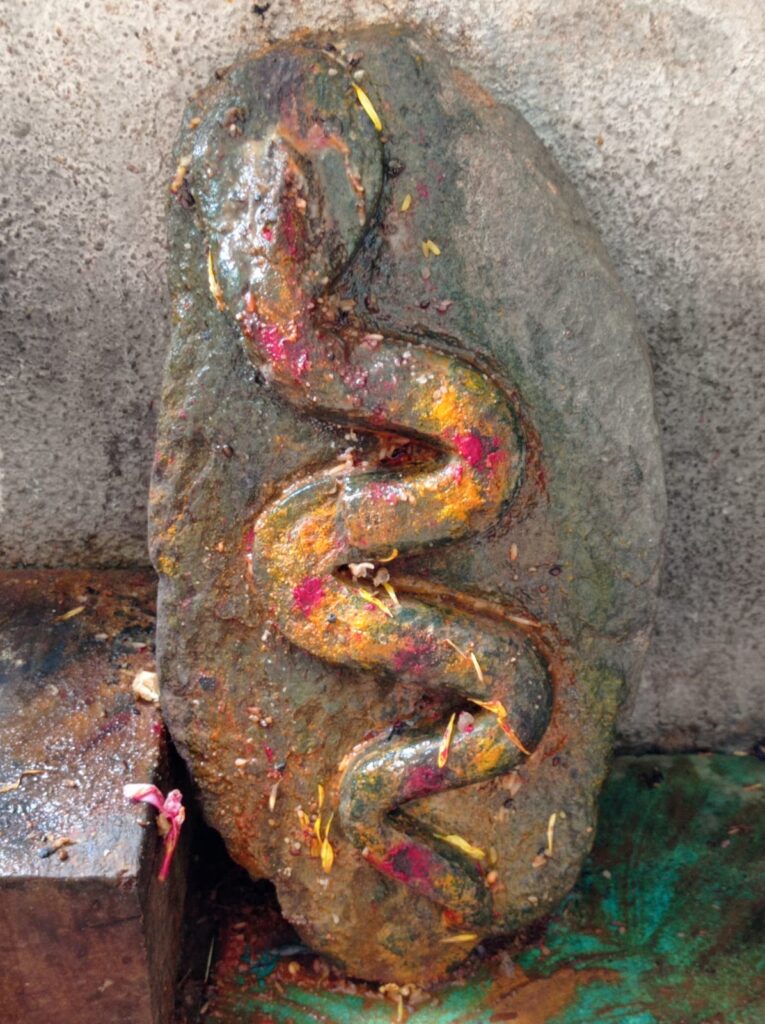
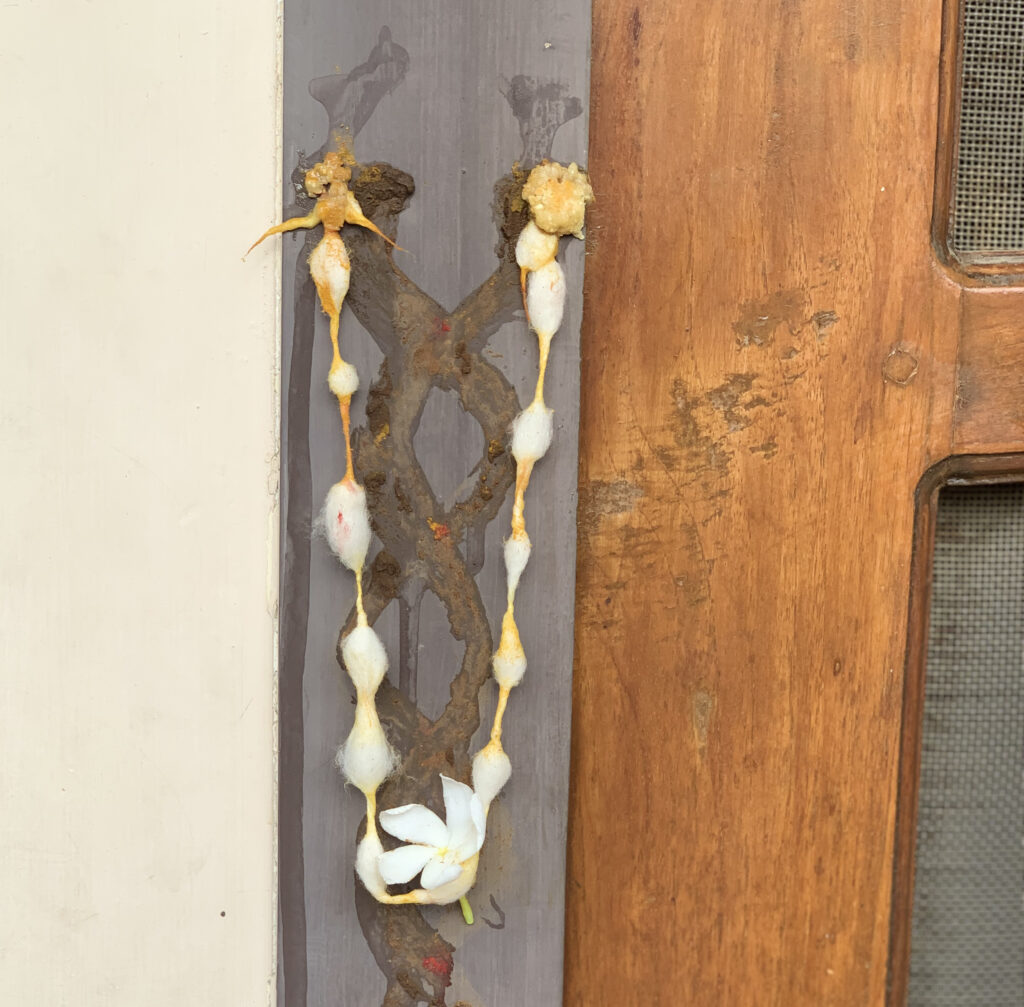
On the next day (Naga Panchami), people instal silver or clay idol of the Snake God and worship it with milk and sweets.
In the state of Kerala, the Nairs and the Ezhavas community are the Naga worshippers. They construct snake shrines in their ancestral house in the south-west direction. On Naga Panchami, puja is performed by offering milk and the milk is collected as Tirtham. Women sprinkle the tirtham on the back of the brother using a Hibiscus flower. This is to ward off the poisonous snake bites. The ritual ends with tying of turmeric dipped thread on the right wrist of the brother.
Worshipping the snake god at my home
Though my family has moved to Gujarat, my mother makes sure that we do not forget the traditional way of celebrating Naga Panchami. Early morning of Nagarchauthi, we clean the doors and paint the images and snakes on the frames of the door and perform the puja. Fast is observed on this day by all family members and Tambittu is made (check out my post for the recipe of Tambittu). The next day, the snake idol is placed on a silver plate and offering of milk and jaggery water along with small tambittu and chigili (sesame seed and jaggery balls) is made. On this day the use of knife, spoons, ladle and rolling pins are avoided for cooking food. At night salt is sprinkled on the snake idol as a form of end of the ceremony.
The festival of Naga Panchami helps us in understanding how each creature on this planet plays a special role and how one should always respect the living souls. The snake which is often mistaken as a poisonous and ominous creature holds a very importance and special place in Indian culture.
If you have any other stories of Naga Panchami celebrations at your place, share with me…

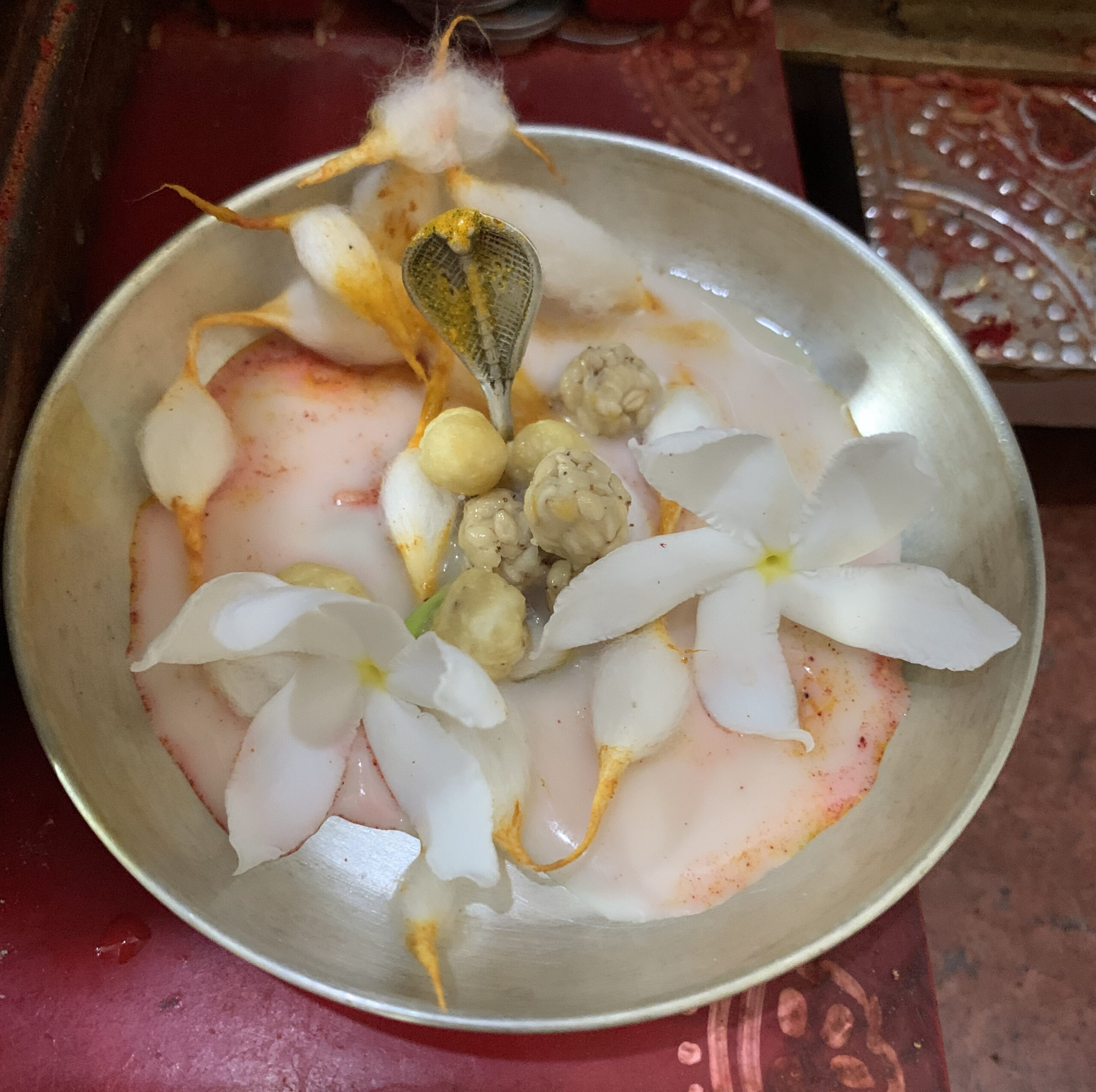
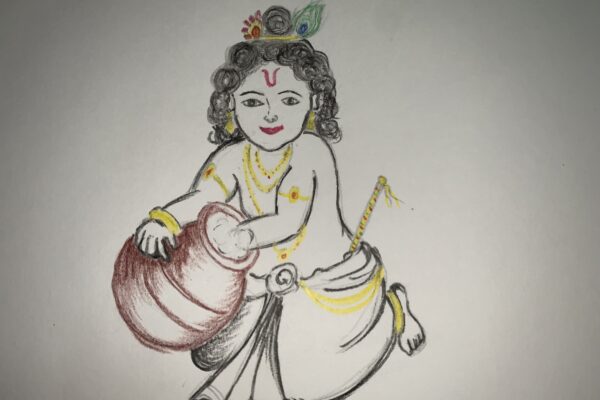
One thought on “WORSHIPPING OF THE SNAKE GOD IN INDIA”
Comments are closed.